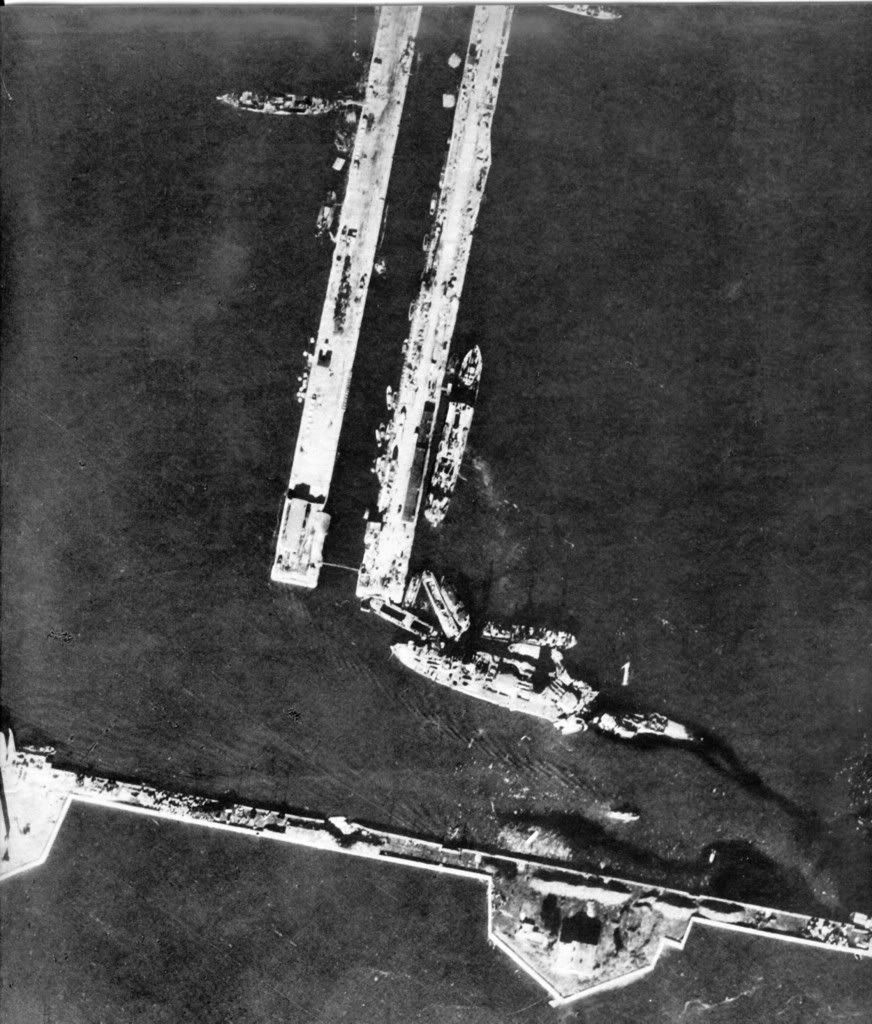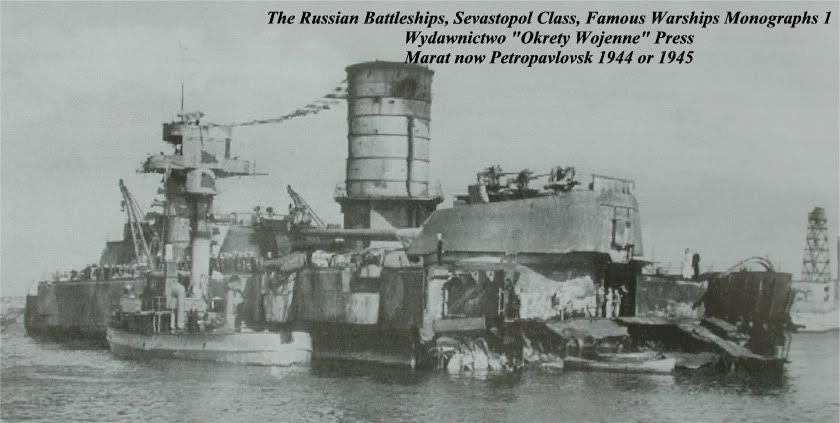Once again – sorry for being late, honorable ladies and gentlemen, but due to my inexorable obligations I am able to provide only a dilatory factographic contribution. Hopefully a useful one…
As you know, one amongst the most distinguished bombing actions in WW 2 was a devastation of soviet battleship Marat (ex-Petropavlovsk), carried out by Hans Ulrich Rudel on September 23rd,1941. Marat probably was the most famous ship of the legendary Russian Sevastopol Class of battleships, as she represented the Soviet Union in the Coronation Review for King George VI in June of 1937. She was based at Tallin when Germany invaded the Soviet Union in June of 1941, and she almost immediately became the target of German Luftwaffe. In those times the Baltic Fleet had just achieved a breakthrough from Tallinn to Kronstadt and the order was to concentrate on heavy artillery saturation-fire upon enemy armed forces. The fleet’s long-range large-caliber guns rendered an invaluable service to the battlefront. To help accomplish a general strategic mission – decisive defense of Leningrad – the ships trained all their guns on the enemy’s motorized columns that were trying to penetrate into the city perimeter. To this end the battleship Marat, the cruisers Maxim Gorky and Petropavlovsk, the flotilla leader Leningrad, and the destroyers Opytny and Smetlivy were moored in the estuary of the Neva River and the harbours of the city’s commercial port. Out of the Kronstadt group of ships, namely the battleship Oktyabarskaya Revolutsiya, the cruiser Kirov, flotilla leader Minsk, the destroyers Silny, Surovy, Svirepy, Slavny, Stoiky, Gordy and Steregushchy also took up assigned firing positions.
Altogether twenty four 305 mm, eighteen 180 mm (not counting the 203 mm main guns of the heavy cruiser Petropavlovsk) and over fifty 130 mm guns of the battleships, cruisers, flotilla leaders and destroyers were completely prepared for heavy support artillery fire. This was a very impressive force. For example, only a battleship’s artillery barrage weighed six tons. In a minute the ship was able to shower the enemy with 50 tons of heavy shells.
Conducting highly accurate and long-range fire the 305 mm heavy ordnance were a source of serious trouble to the Germans. No wonder that they committed large Luftwaffe formations to action against those ships, and the battleships were their main targets. Subsequently the Marat was firstly hit with a heavy bomb on September 16, when she was anchored in the boot basin of the Morskoi Kanal and her guns were firing at the attacking columns of the Wehrmacht. However, the Luftwaffe conducted particularly massive raids on her on September 21-23. She was then moored in Tzar Peter I Harbour in Kronstadt.
On September 23, 1941 entire Baltic fleet was massively attacked by Ju-87 B Stuka dive-bombers of the Stukageschwader 2 Immelmann. One 1-ton bomb aimed by Rudel has effectively penetrated through her deck armor, and subsequently detonated her forward ammunition magazine of the 23606 ton naval veteran, built back there in 1911. In a colossal explosion, mostly similar to that experienced by USS Arizona about two and a half months later in Pearl Harbor, the bow area of the ship was completely ruined, “A” gun turret with two 305 mm cannons crumbled, and parts of the superstructure thrown onto a nearby quay. As always, members of the Stabia LFL 2 photo-reconnaissance squadron were on the spot in a little while, so previously mentioned accomplishment was heavily photographically recorded for further evaluation.

Clobbered and partially sunk Battleship Marat (ex-Petropavlovsk), Kronstat – September 23, 1941. Photo taken by Stabia LFL 2, colonel Hans Ruef
The complete forecastle, a turret and the bridge were destroyed, but fortunately the ship has laid down herself to the shallow harbor bottom, and outstanding success of the German aerial attack was soon compensated by equally unbelievable Soviet steadfastness and constructive ingenuity: remained ship hull was water-tightened by welded steel plates, leveled and counterbalanced with water ballast, and additionally stabilized by anchors. This magnificent achievement was carried out by the talented specialists of the EPRON (Expedition of Underwater Works for Special Purposes) already an efficient state-owned and controlled rescue and salvage organization. Manned with experienced technicians and divers and sufficiently equipped with rescue vessels and other essential equipment it was incorporated in the Soviet Navy on June 22, 1941.

Marat, partially repaired
As previously mentioned, three other turrets remained basically intact, and two months later, as the Wehrmacht drew closer, the remaining three 305 mm main gun towers continued to support ground operations. The Marat, however, never sailed out to sea after that. Though she remained moored till the end of the war, she continued to fight and to inflict heavy losses on the enemy. On May 31, 1943 heavily damaged ship was once again renamed as Petropavlovsk. There were plans for her reconstruction, but they were never carried out. Ship was reclassified as a stationary artillery training ship in November of 1950 and once again renamed Volkhov, but finally scrapped in 1954.
And here you have another, quite unknown original snapshot of the Junkers 87 G 2. It was published in a official Hungarian Royal Air Force Magazine “Magyar Szárnyak” (Hungarian Wings) No.13/43 (1st of July, 1943).

Ju 87 G2
I think that I will be able to find there some intriguing pictures about our common theme – factual armor-piercing efficiency of those 3,7 cm Bordkannone guns too. Till then – all the best.








